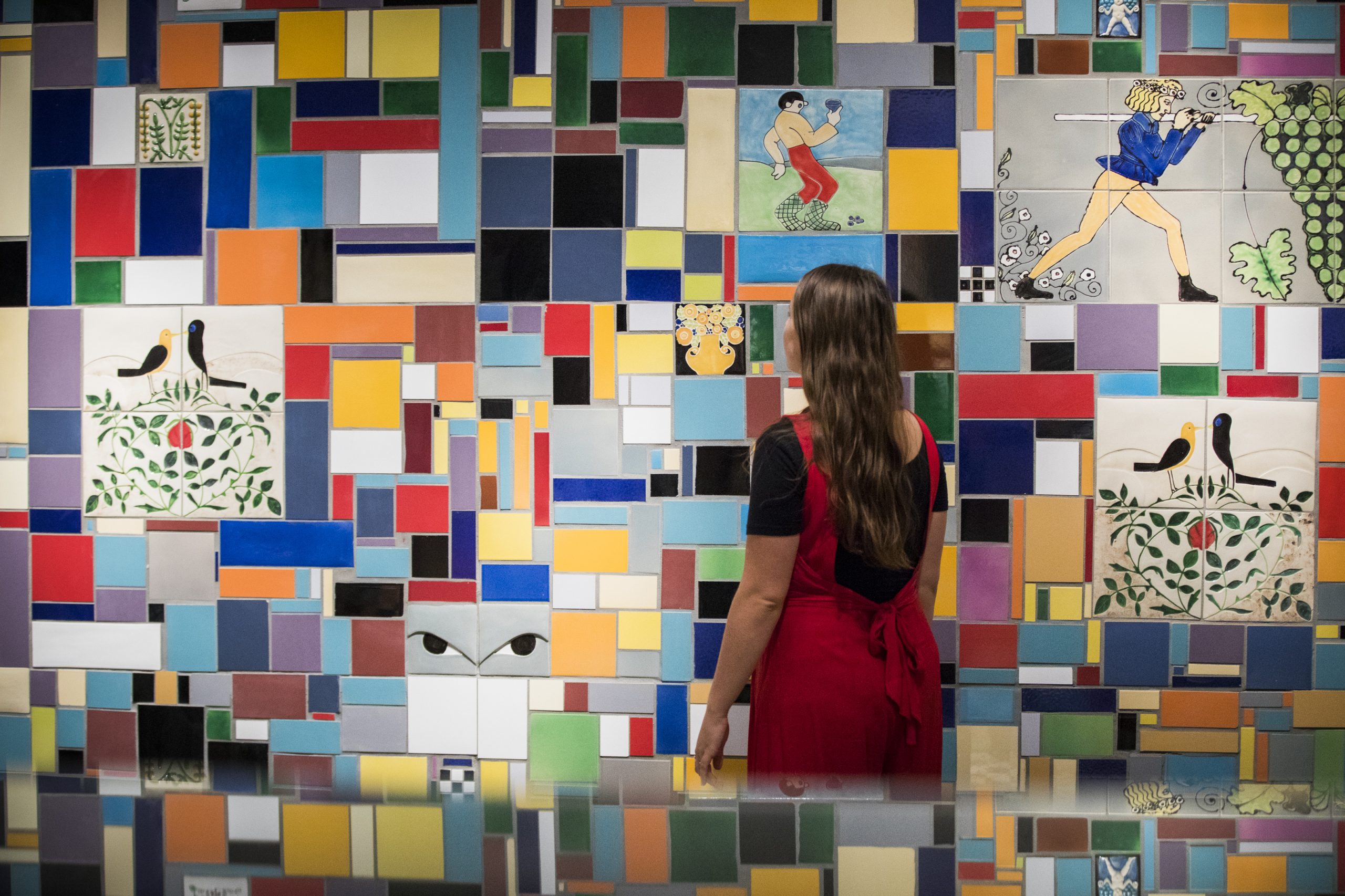“One day we will carpet life with the scattered petals of new songs” proclaims an inscription over a painting by Alva de la Canal of El Café de Nadie, a club in 1920s Mexico City. In many ways, the new exhibition at the Barbican is itself carpeted ‘with the scattered petals of old songs’. It aims to tell the stories of twentieth-century cabarets and clubs.
Like most of the Barbican’s exceptional programming, Into the Night is a dynamically and intelligently curated exhibition. Nightlife is a fascinating subject for an exhibition, and one which has never been explored in a gallery setting. The show in the Barbican is confidently organized and fluid. The space is highly compelling: social history preserved in concrete and glass, perfect for exploring multi-layered cultural stories. One of the most alluring facets of the exhibition is the painstaking recreation of Vienna’s famous Café Fledermaus on the lower floor. Leaning against the colourful tiles of the jewel in the crown of the Vienna Secession while being firmly in EC2 is a surreal and evocative experience.
The exhibition excels in its exploration of Café Fledermaus, as well as the Cabaret del Diavolo in Rome, Chat Noir in Paris, and the gender-fluid genre-bending artistic clubs of Berlin at the beginning of the twentieth century. Furniture, menus, paintings, and early grainy photographs are all offered up to piece together a picture of boozy smoke-and-jazz-filled rooms as places of real creative birth. Muffled music coming from the lower galleries feels like you’re behind a closed bathroom door at one of these clubs.
Moreover, focus on the Mbari clubs of Ibdadan and Osogbo provides a much-needed exploration of mid-century Nigerian nightlife without shying away from the impact of colonialism on such endeavours. From lesbian nightclubs in Paris to the sexually free cafes of Berlin, the exhibition gave great insight into how cabarets and nightclubs offered LGBTQ+ people both a safe space and unlimited artistic freedom. Those who lived in the margins of society were finally free in the shadows of night and created beauty when they were.
At its heart, this is a truly fascinating and dynamic show: the chasm between experiencing and observing nightlife has never been demonstrated so dramatically. Perhaps I would have been better visiting the exhibition on one of the evenings it opens late, with free live jazz and operating bars. My Wednesday daytime meander consisted almost entirely of delightful post-brunch middle-aged couples. There did feel to be a bit of an emotional disconnect in portraying the fizzing and frothing nightlife of the interwar period in a, dare I say, clinical way – as is bound to be in any kind of gallery setting. There’s nothing more anachronistic than blinking in the early afternoon sunshine at photographs of now-dead people enjoying themselves hundreds of years ago, hundreds of miles away.
Cinema and exhibition tickets are only £5 with Young Barbican membership, which is completely free to sign up for if you’re between 16 and 25.

